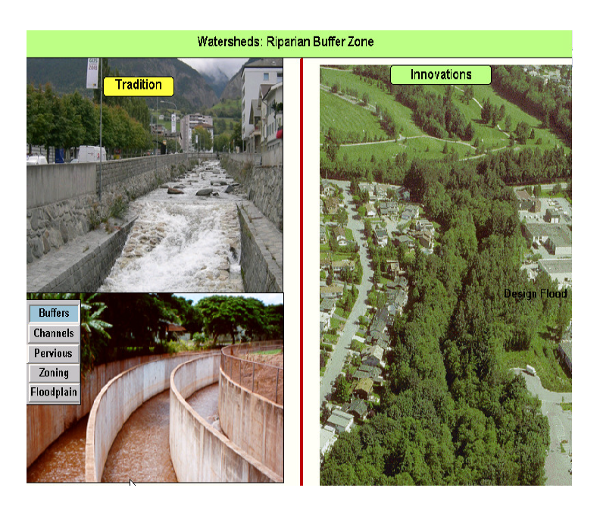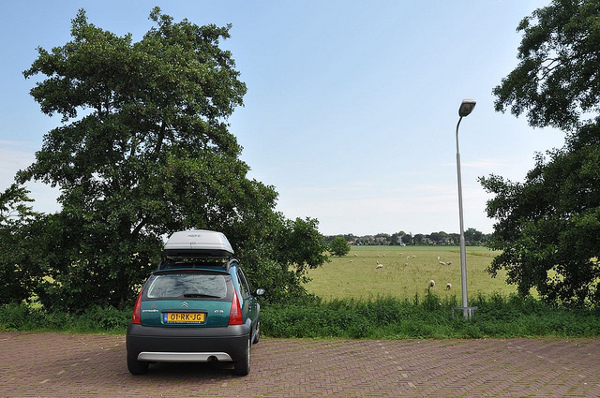Over the past several weeks we have been on a learning journey teaching us how ecologically healthy watersheds mitigate for flood flow volumes. Specifically we have learned that:
- healthy soils rich in organic matter hold and store more water than depleted soil systems;
- established wetlands act as sponges across the landscape absorbing surface water runoff, subsequently replenishing our aquifers while slowly releasing runoff into our streams and rivers;
- dense riparian edges provide buffer zones that slow down high flow volumes, and at the same time, filter surface and subsurface runoff; and
- undeveloped vegetated floodplains provide the river room to meander and attenuate flood flow volumes via established roots structures.
This has all highlighted the beneficial flood mitigation functions these ecologies offer us and led us to this final blog in the series.
We have touched on the multifunctional role these ecologies play in providing us with many other important ecosystem goods and services such as drought mitigation, improved water quality and biodiversity, erosion control, climate regulation, important habitats for aquatic and terrestrial species, and recreational spaces for humans. This is a reminder that investing in the ecological resiliency of our watersheds for flood mitigation creates many other positive feedback loops.
Unfortunately, ecosystem goods and services often go unrecognized in economic markets, government policies and land management practices because they are difficult to quantify thereby creating a further hurdle to their evaluation and implementation in flood mitigation decision-making processes. The lack of accounting for the value these ecologies provide often leads to decision makers choosing mega infrastructure mitigation options as they appear more effective, because they are quantifiable. This signifies a major gap in our decision making processes.
In order to close this decision making gap, jurisdictions are evaluating projects based on a triple bottom line accounting system in which quality of life and ecological health are factored into the capital equation. One example is the San Antonio River Improvement Projects (SARIP)[1] that invested 384.5 million dollars in the ecological restoration of 20 kilometres of their urban river channel; making it the largest urban river restoration project in the United States. Under the SARIP a concrete channel dating from the 1970s that was designed to alleviate southern communities in the event of 100 year flood was rewilded. The issue with the concrete channel was it had seriously impacted the ecological health of the river. The decision makers could have chosen a more technological option that would have served the purpose of purifying the river water, but instead decided to invest in an idea that had multiple positive benefits. The main driver behind approving the SARIP was the use of triple bottom line accounting which demonstrated the economic, social and ecological value of investing hundreds of millions of dollars into a project that would provide other beneficial goods and services to their local community.
So the river was rebuilt with strong riparian areas, vegetated floodplains, and snags for the river to meander. The river was designed to function like a natural ecosystem while maintaining the ability to mitigate for a 100 year flood. The people of San Antonio have their river back, with greater recreational spaces that have led to increased local economic development such as river kayaking tours, and interpretive walks. More residential and commercial development has sprung around this project as residents want to be closer to this new wild river parkway. The SAIRP has also contributed to the quality of life of San Antonio residents giving them more space to exercise subsequently helping combat the local obesity problem.
Projects like these are happening in our backyard too. The City of Calgary is reclaiming an old gravel pit along the Bow River. This is a new innovative storm water management project that combines ecosystem restoration of the riparian cotton woods, art, earth works and nature engaged learning into our storm water purification systems. Designed with the help of artists, ecologists and water engineers this project is future forward, demonstrating our own creative potential of design.
Placing value in multifunctional solutions that solve more than one societal problem speaks to a major change that is underway in how we chose to develop our societies. The use of multifunctional solutions designed to mimic nature’s intrinsic intelligence is an emergent design science. A multidimensional perspective understands the linkages between our own sustained resiliency and the health of our ecologies.
 |
| From the presentation “Innovative Stormwater” by Hans Schrier |
“Rewilding Our River” solutions are more complex because they are multi-faceted, rooted in land use management practices, and require collaboration across government, industry and watershed stewards. Implementing these multifunctional solutions is challenging because of their intrinsic multidimensional nature, however the actual solutions themselves are not complex. They are simple; planting trees, protecting top soil, and re-establishing native grasslands and woodlands of our watersheds. Fundamentally what it comes down to is recognizing the value these solutions bring to all aspects of our watershed health and our community resiliency. As we continue to encroach upon our ecologies we continue to compromise their functioning ability to act as a buffer during extreme weather events. Climate change predictions anticipate greater moisture loads in the atmosphere, subsequently accelerating the hydrologic cycle leading to increased frequency and duration of extreme storms[2]. Solutions like the ones mentioned in this discussion series provide climate resilience helping us mitigate the effects of both floods and droughts. This is why now, more than ever, it is crucial for our own socio-ecological resiliency, for us to restore balance, and design systems with nature in mind.What would these solutions look like here in Alberta?
- Should we apply incentive programs for farmers to shift to agroforestry practices?
- Do you think we should look at changing the face of agricultural development in general in Alberta to more earth sustaining practices that support healthy soils?
- Should we apply incentive programs that encourage land owners on the river to restore their riparian edge?
- Should we provide incentives for all landowners to plant trees?
- Should we designate lands that will be restored to functioning wetlands?
- Should we become leaders in this new design science and create a new ecological economy around low impact multifunctional solutions?
We want to hear from you. We’ve presented you with some ingredients for greater resiliency. What would you like to make with them?
Lauren Eden is a Researcher at Alberta WaterSMART
 |
| “Parking Lot” by René Voorburg is licenced under CC BY 2.0 |
[1] San Antonio River Authority. (2014). San Antonio River Improvements Project. Retrieved from http://www.sanantonioriver.org/
[2] Kousky, C. Walls, M. & Chu, Z. 2013. Resources for the Future. Flooding and Resilience Valuing Conservation Investments in a World with Climate Change.
